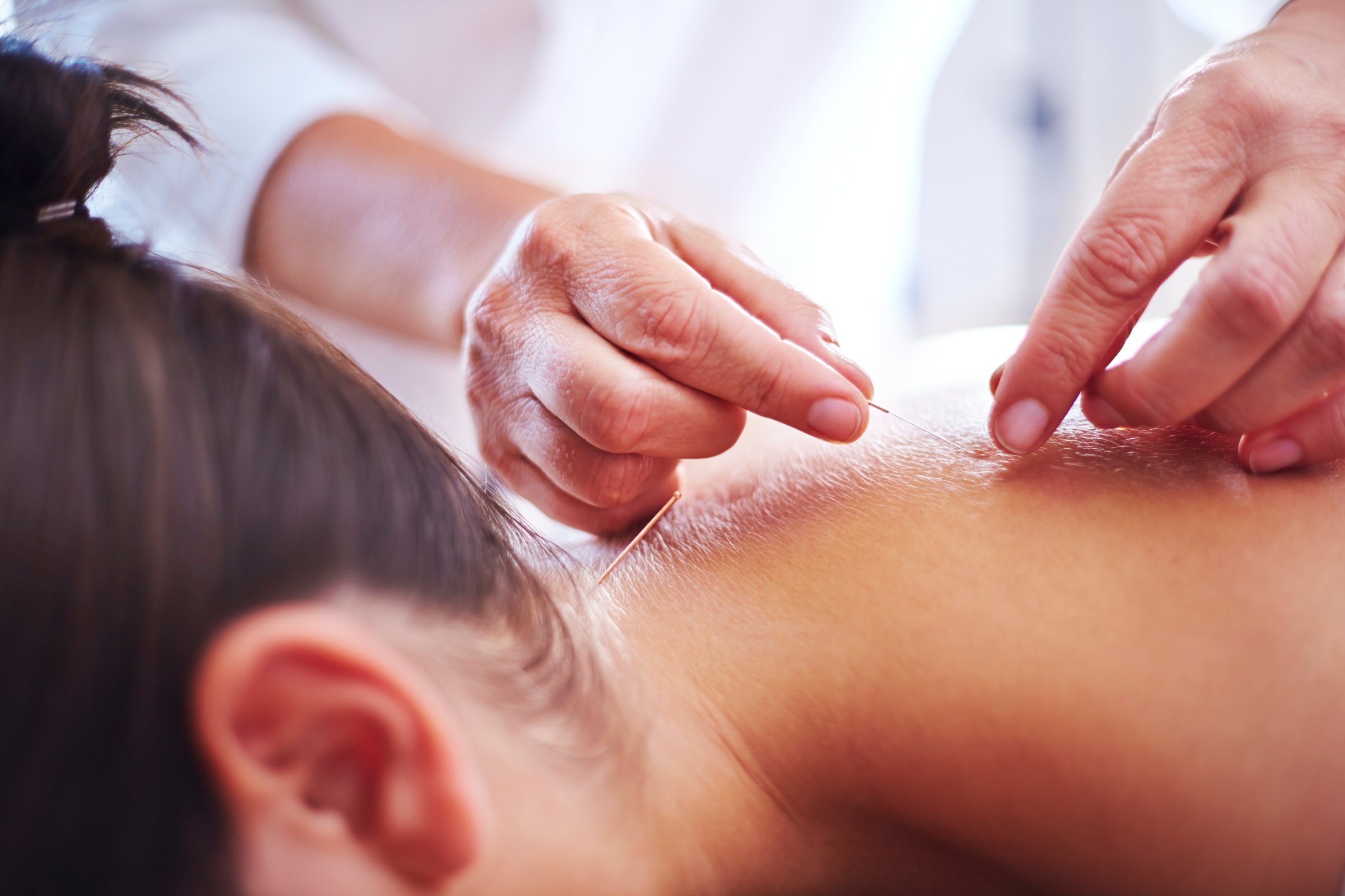
Every year, tens of thousands of breast cancer survivors are prescribed aromatase inhibitors—medications recommended for up to ten years to protect against a recurrence of the disease. But these drugs can cause side effects, including severe joint pain, which cause many women to stop taking them.
Now, research presented at the San Antonio Breast Cancer Symposium suggests that acupuncture may reduce drug-related joint pain for these women, and may provide a way for them to continue taking these potentially life-saving medications. The study authors hope their findings will persuade more insurance companies to cover the alternative medicine technique, in addition to traditional breast cancer treatments.
“Aromatase inhibitors are one of the most common and most effective medications in breast cancer, and they’re used for both prevention and for early-stage treatment,” says lead author Dr. Dawn Hershman, professor of medicine and epidemiology at Columbia University and vice chair of SWOG, the research network that conducted the study. “But we know that they don’t work if people don’t take them, and we know the most common people don’t take them is because they develop side effects.”
The medicines—including Arimidex, Aromasin and Femara—are commonly prescribed to post-menopausal women with hormone-sensitive breast cancers, sometimes for up to 10 years. (About 80% of all breast cancers are hormone-sensitive, also known as estrogen receptor–positive.) They can also be prescribed to post-menopausal women at high risk of a first-time breast cancer.
But about half of women who take aromatase inhibitors report joint pain and stiffness that affects knees, hips, hands and wrists. The pain can be so severe that it makes it difficult for women to walk, sit, climb stairs, type or drive a vehicle. Researchers even have a name for the condition: aromatase inhibitor–associated musculoskeletal syndrome, or AIMSS.
The study authors were interested in acupuncture’s potential as a non-pharmaceutical option for treating for AIMSS, which has been suggested in smaller studies. “People don’t want to take a medication that causes its own side effects to treat the side effects of another medication,” says Hershman. “And in this country right now, we want to do everything we can to avoid prescribing opioids, especially on a long-term basis.”
Hershman and her colleagues enrolled 226 people with early-stage breast cancer from 11 treatment centers across the country. The women were randomly divided into three groups and for the next 12 weeks received true acupuncture, sham acupuncture (a method of superficially inserting needles into non-therapeutic points in the body) or no treatment at all.
The real and sham acupuncture groups received treatments twice a week for the first six weeks, followed by one weekly treatment for the next six weeks. All of the groups answered questions about their pain and its impact on their daily functioning before, during and after their treatments.
After the first six weeks, 58% of women in the real acupuncture group experienced at least a 50% reduction in pain after six weeks, compared to 33% in the sham acupuncture and 31% in the group without treatment. Not only are those results statistically significant, says Hershman, but they’re also clinically significant—meaning that it’s enough to make a real-life difference in pain.
When the researchers followed up 12 weeks after the acupuncture treatments had stopped, the differences in pain relief between the acupuncture group and the other two groups remained significant. The main side effect was mild bruising where the needles were inserted, experienced by about 60% of people in the true acupuncture group and 25% of people in the sham group.
The study, which was funded by the National Institutes of Health, has not yet been published in a peer-reviewed medical journal. But Hershman says the findings should give patients and doctors confidence that acupuncture may provide some benefit to women experiencing joint pain due to aromatase inhibitors. “We hope that third-party payors will also support patients receiving acupuncture and will provide financial reimbursements for these treatments, as well,” she says.
A growing body of evidence suggests that acupuncture may be effective at reducing pain from a variety of sources, and in a variety of populations. Experts don’t know exactly how it works, but one suggestion is that it may trigger the release of the brain’s natural painkilling chemicals, says Hershman.
Inflammation may also play a role, she adds. “We did collect blood from our patients at various points throughout the study,” she says, “and we hope that we’ll be able to look at inflammatory markers between the groups and see if there are differences that point to a potential mechanism.”
More Must-Reads from TIME
- Cybersecurity Experts Are Sounding the Alarm on DOGE
- Meet the 2025 Women of the Year
- The Harsh Truth About Disability Inclusion
- Why Do More Young Adults Have Cancer?
- Colman Domingo Leads With Radical Love
- How to Get Better at Doing Things Alone
- Michelle Zauner Stares Down the Darkness
Contact us at letters@time.com